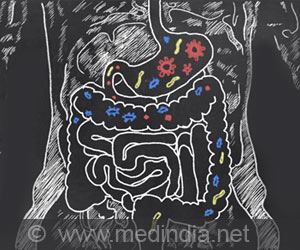- A rare type of bacteria, called Veillonella, have been discovered in athletes
- These bacteria are present in the gut microbiome of marathon runners
- They metabolize lactic acid to propionate, which significantly improve exercise capacity
The study was jointly led by Professor George M. Church, Ph.D, and Dr. Aleksandar D. Kostic Ph.D. Dr. Church is a Professor of Genetics at Harvard Medical School and a Professor of Health Sciences and Technology at Harvard University and Massachusetts Institute of Technology (MIT), Boston. Dr. Kostic is an Assistant Professor of Microbiology at Harvard Medical School and an Assistant Investigator at the Joslin Diabetes Center, Boston, USA.
The first author of the paper was Dr. Jonathan Scheiman, Ph.D, who is the Co-Founder and CEO of FitBiomics, New York. The co-author of the paper was Dr. Sarah J. Lessard, Ph.D, who is an Assistant Professor of Medicine at the Joslin Diabetes Center, Boston, USA.
Read More..
Aim of the Study
The long-term aim of the study is to develop a probiotic supplement that increases exercise capacity to promote overall health and longevity, as well as help protect against chronic conditions such as diabetes and cardiovascular diseases.Background of the Study
The study was initiated in 2015 when fecal samples were collected from Boston Marathon runners. Scheiman, who was then a research fellow in Church’s lab, collected fecal samples from runners one week before and one week after the event. He also collected fecal samples from sedentary individuals for comparison. The fecal samples were analyzed microbiologically by Kostic to identify the bacterial species in the two cohorts.Key Findings of the Study
The major findings are highlighted below:- Fecal samples obtained immediately after the marathon contained high levels of bacteria belonging to the genus Veillonella. These bacteria were also generally higher in the fecal samples of runners, compared to that of sedentary individuals
- Veillonella spp. are Gram-negative, anaerobic cocci that are quite unique. Firstly, they are very rare in the human microbiome and secondly, they only use lactic acid or lactate as their sole source of carbon
- Mouse model studies were carried out to establish whether Veillonella was responsible for increasing exercise capacity. They showed that when mice were supplemented with Veillonella, they ran much faster compared to the control mice
- It was noticed that Veillonella could metabolize lactic acid produced during exercise and convert it into propionate, a short-chain fatty acid, thereby indicating that these bacteria utilized lactic acid as their major food source
- Metagenomic analysis revealed the underlying mechanism behind the metabolism of lactic acid by Veillonella. The researchers found that the levels of enzymes responsible for the conversion of lactic acid into propionate were highly elevated in these bacteria following strenuous exercise
Future Plans
Kostic and his colleagues plan to set up a collaboration with Lessard’s group to investigate the mechanism of action of propionate in the regulation of exercise capacity.Concluding Remarks
Kostic concludes: “This is one of the first studies to directly show a strong example of symbiosis between microbes and their human host.”“It’s very clear. It creates this positive feedback loop. The host is producing something that this particular microbe favors. Then in return, the microbe is creating something that benefits the host,” he says. “This is a really important example of how the microbiome has evolved ways to become this symbiotic presence in the human host.”
Funding Source
This work was funded by the National Institutes of Health/National Human Genome Research Institute (NIH/NHGRI), the National Institute of Diabetes and Digestive and Kidney Diseases (NIH/NIDDK), the American Diabetes Association (ADA), the Synthetic Biology Platform at the Wyss Institute for Biologically Inspired Engineering at Harvard University, and the National Science Foundation (NSF), among others.Reference:
- Meta-omics analysis of elite athletes identifies a performance-enhancing microbe that functions via lactate metabolism - (https://doi.org/10.1038/s41591-019-0485-4)
Source-Medindia














